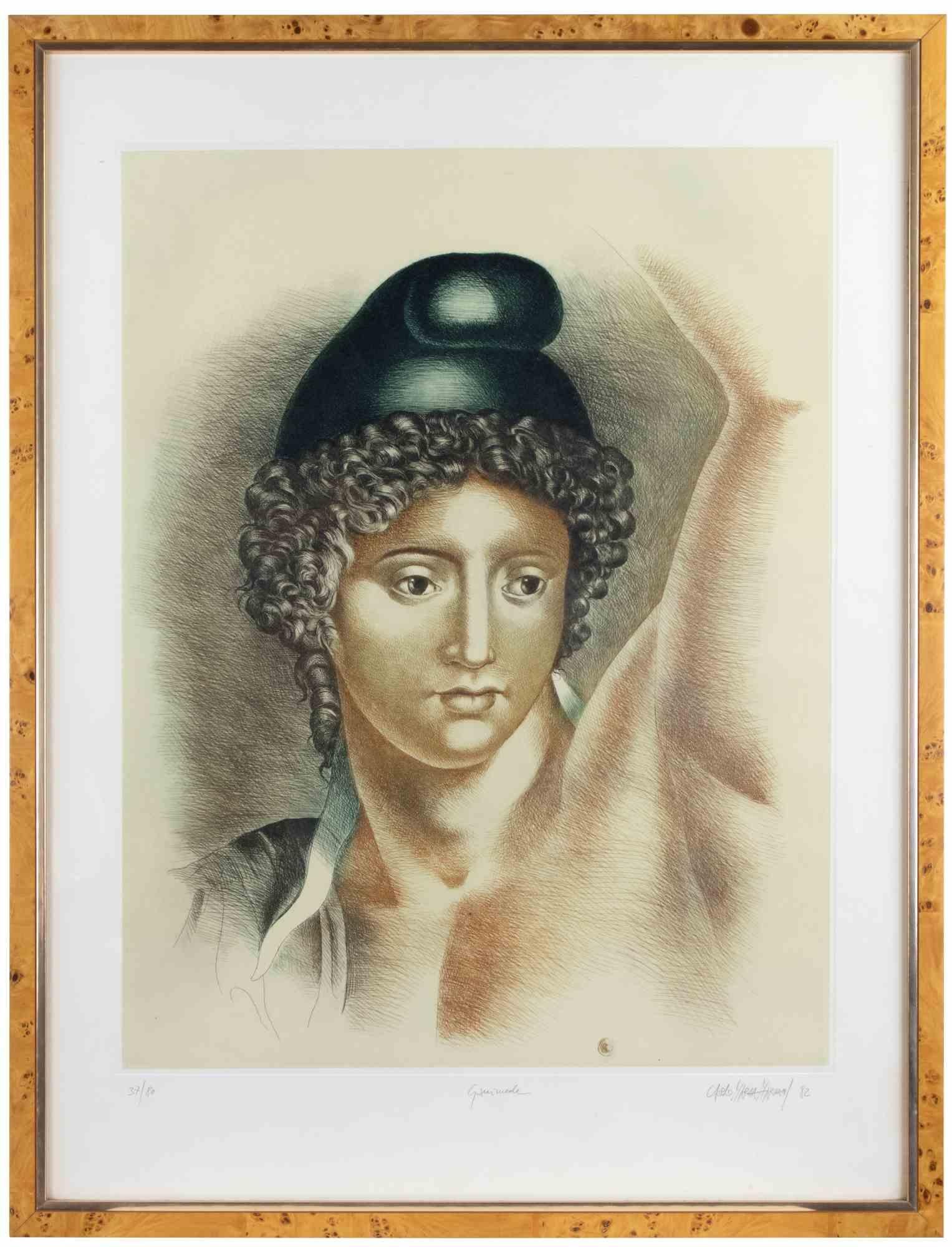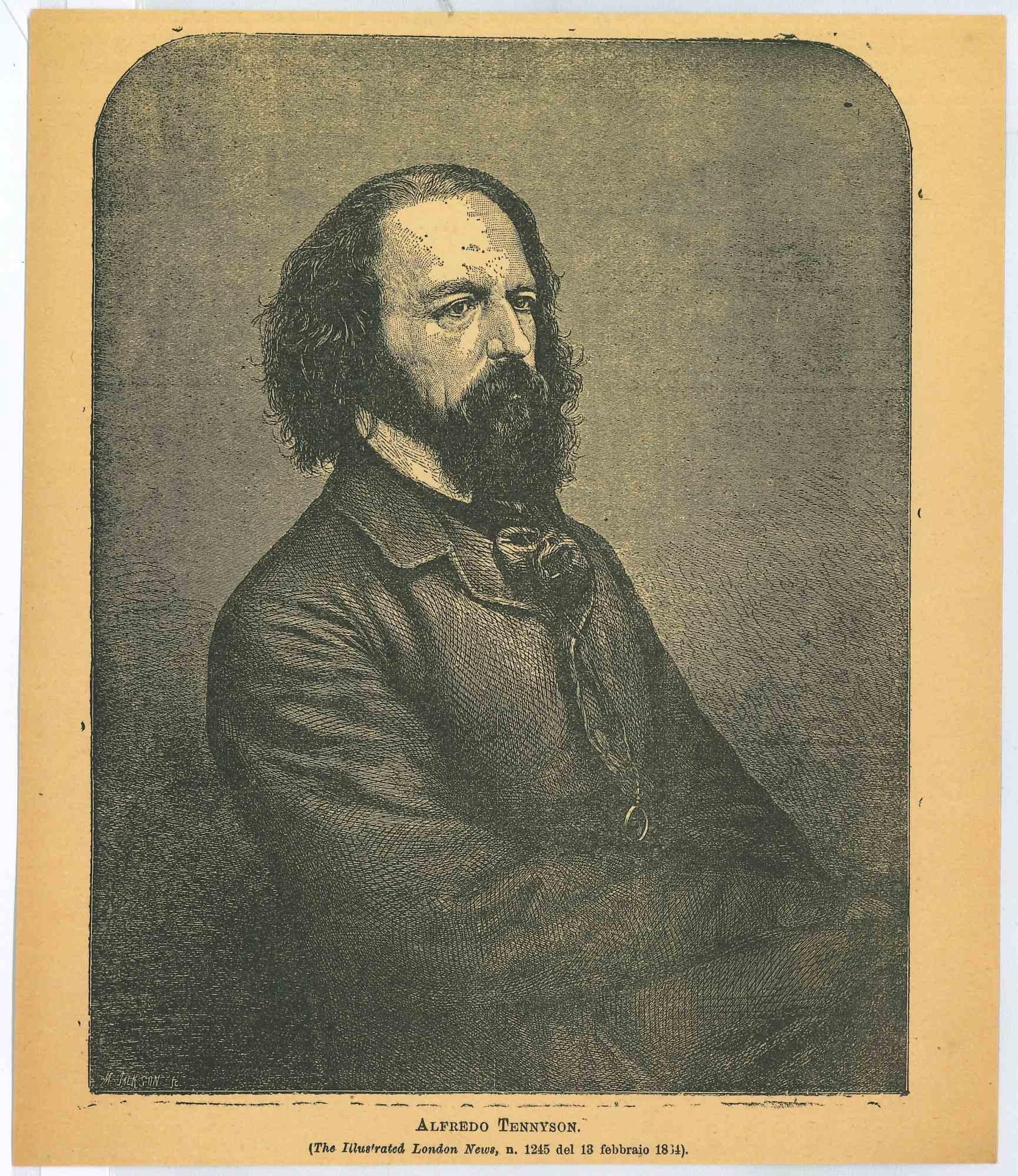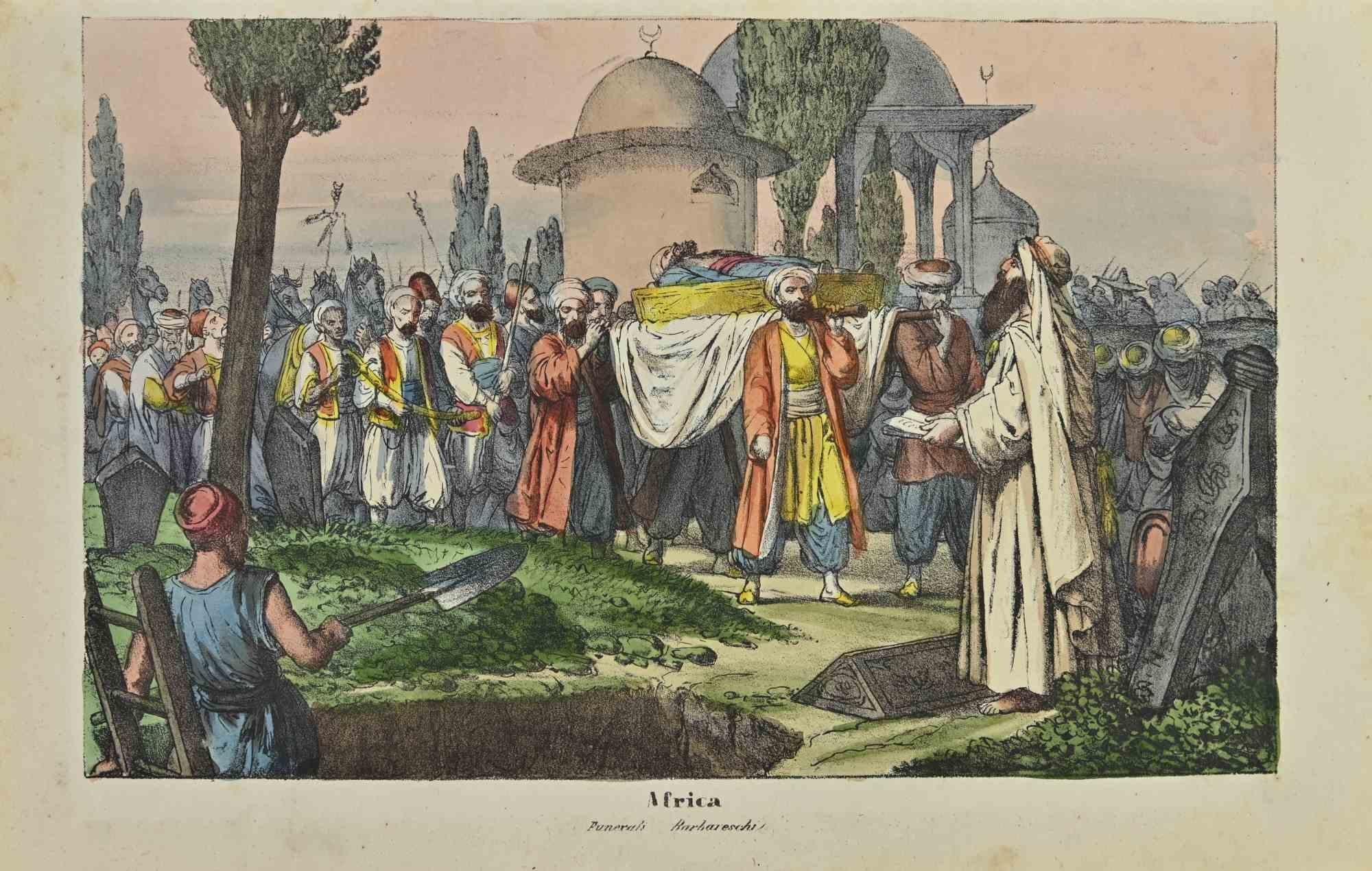Marc Chagall"Genesis-Angel of Paradise" Illustration for "The Bible" for Verve, Lithograph1956
1956
About the Item
- Creator:Marc Chagall (1887 - 1985, French)
- Creation Year:1956
- Dimensions:Height: 22.88 in (58.12 cm)Width: 18.88 in (47.96 cm)
- Medium:
- Movement & Style:
- Period:
- Condition:
- Gallery Location:Milwaukee, WI
- Reference Number:
Marc Chagall
Described by art critic Robert Hughes as "the quintessential Jewish artist of the twentieth century," the Russian-French modernist Marc Chagall worked in nearly every artistic medium. Influenced by Symbolism, Fauvism, Cubism and Surrealism, he developed his own distinctive style, combining avant-garde techniques and motifs with elements drawn from Eastern European Jewish folk art.
Born Moishe Segal in 1887, in Belarus (then part of the Russian empire), Chagall is often celebrated for his figurative paintings, but he also produced stained-glass windows for the cathedrals of Reims and Metz, in France; for the United Nations, in New York; and for the Hadassah Hospital in Jerusalem, as well as book illustrations, stage sets, ceramics, tapestries and fine-art prints. Characterized by a bold color palette and whimsical imagery, his works are often narrative, depicting small-village scenes and quotidian moments of peasant life, as in his late painting The Flight into Egypt from 1980.
Before World War I, Chagall traveled between St. Petersburg, Paris and Berlin. When the conflict broke out, he returned to Soviet-occupied Belarus, where he founded the Vitebsk Arts College before leaving again for Paris in 1922. He fled to the United States during World War II but in 1947 returned to France, where he spent the rest of his life. His peripatetic career left its mark on his style, which was distinctly international, incorporating elements from each of the cultures he experienced.
Marc Chagall remains one of the past century’s most respected talents — find his art on 1stDibs.
- ShippingRetrieving quote...Ships From: Milwaukee, WI
- Return PolicyA return for this item may be initiated within 14 days of delivery.
- 19th century color lithograph portrait Rembrandt expressive sepia contrastBy Claude WeisbuchLocated in Milwaukee, WI"Rembrandt en Habit de Capitaine" is an original lithograph by Claude Weisbuch. The artist signed the piece lower right and wrote the edition number (249/250) in the lower left. This...Category
1980s Modern Portrait Prints
MaterialsLithograph
- 20th century lithograph figurative print male subjects hats dark scene signedBy Claude WeisbuchLocated in Milwaukee, WI"Five Dutchmen with Hats" is an original lithograph by Claude Weisbuch. The artist signed the piece lower right and wrote the edition number (EA 15/30) in the lower left. This piece ...Category
1970s Modern Figurative Prints
MaterialsLithograph, Paper
- 20th century color lithograph figurative print male subjects sketch scene signedBy Claude WeisbuchLocated in Milwaukee, WI"La Lecon Du Professor Tulp" is an original lithograph by Claude Weisbuch. The artist signed the piece lower right and wrote the edition (ETAT) in the lower left. This piece depicts ...Category
1970s Modern Figurative Prints
MaterialsLithograph, Paper
- Original Lithograph Native American Female Figure Mystery Secret Society SignedBy Leonard BaskinLocated in Milwaukee, WI"Cheyenne Woman in the Robes of a Secret Society" is an original lithograph by Leonard Baskin. It depicts a Native American woman in pale green robes. The title is written on the lef...Category
1990s Portrait Prints
MaterialsLithograph, Ink
- Original Lithograph Native American Figure Portrait Male Tribe Bold Stoic SignedBy Leonard BaskinLocated in Milwaukee, WI"Magpie Eagle Feathers" is an original lithograph proof for Fox Graphics signed by the artist Leonard Baskin. It depicts a Cheyenne man named Magpie Eagle Feathers in a black hat against a blue background. Artwork Size: 38 1/2" x 26 3/4" Frame Size: 49 3/4" x 37 1/2" Artist Bio: Leonard Baskin (1922-2000) was an american artist born in New Jersey and taught art classes in Massachusetts. He has received many public commissions (including a bas relief for the FDR Memorial), honors, and his work is owned by many major museums around the world. Additionally, Baskin was a teacher at Smith College in Northampton, Massachusetts. As a champion for human rights, Baskin created many pieces celebrating those who were seldom recognized. Baskin’s interest in nineteenth century Native Americans was roused into acute attendance from ignorant indifference, when the National Park Service asked him to provide illustrations for the handbook that described the then called “Custer National Park”, now called “Little Big...Category
1990s Contemporary Portrait Prints
MaterialsLithograph, Ink
- "L'Atelier Mourlot Title Page, " an Original Lithograph by Pablo PicassoBy Pablo PicassoLocated in Milwaukee, WI"L'Atelier Mourlot Title Page" is an original color lithograph by Pablo Picasso. It depicts a simplified smiling face in blue, red, yellow, and green with the text "Mourlot Workshop"...Category
1960s Expressionist Portrait Prints
MaterialsLithograph
- Woman Walking Away from GentlemanBy Rudolf BauerLocated in New Orleans, LAA well dressed woman takes leave of a gentleman. Rudolf Bauer was born in 1889, in Lindenwald, Germany-Poland. The son of a wealthy engineer, Bauer became an essential part of the avant-garde movement and the birth of non-objective art in the early 1920's. Bauer began his studies at the Academy of Fine Arts in Berlin in 1905, where he learned the fundamentals and produced beautifully stylized figurative drawings. In 1912, Bauer met Herwarth Walden, a promoter of the avant-garde movement and founder of Der Sturm Art Gallery. Bauer became a member of Der Sturm, and was represented in group exhibitions along with Kandinsky, Picasso, Chagall, Klee et al. By 1922, Bauer had participated in 80 Der Sturm exhibitions in Belgium, Denmark, Great Britain, Italy, et al. In 1917, Bauer had his first one-man show at Der Sturm Gallery, exhibiting 120 works. By 1921, with his many one-man and group exhibitions, and his significant publications of his theories on art, Bauer became Germany's leading abstract expressionist painter. In 1929, Bauer founded his own private museum, Das Geistreich-Bauer (The Realm of the Spirit). In 1933, Hitler became Chancellor of the German Republic and with that modern art was branded as "sub-human". Walden closed Der Sturm and fled Germany. The purge of modern artists and curators began, but at the same time Bauer was having his work exhibited at the new Museum of Modern Art in New York City. Despite Hitler's proclamations of the "degeneracy" of modern art, Bauer continued his mission, the free expression in art, writing dictums and creating art. Meanwhile, Solomon R. Guggenheim, the famous American philanthropist, had been acquiring Bauer's work; so many pieces in fact that that he could no long fit his work within the confines of his residential suite at the Plaza Hotel in New York. In 1936, Guggenheim decided to exhibit his entire collection of Bauer's work in one venue, at the Gibbes Memorial Art Gallery in Charleston, SC. Later that year, the famous Jeu de Paume, a division of the Louvre, in Paris, honored Bauer with a one-man exhibition. As a result of the show, the Louvre purchased one of Bauer's oil paintings. Upon his return from the show at Jeu de Paume, and despite the fact he was not Jewish, Bauer was arrested and sent to a concentration camp. Filippo Marinetti...Category
Early 20th Century Modern Figurative Prints
MaterialsLithograph
- Portrait, The man with a hat - Lithograph, 1971By Paul CézanneLocated in Paris, FRPaul Cezanne Portrait, The man with a hat, 1971 Lithograph and stencil (Jacomet workshop) Unsigned Numbered / 225 On paper applied on Arches vellum 53.5 x 41.5 cm (c. 21 x 16.5 in) ...Category
1970s Modern Portrait Prints
MaterialsLithograph, Stencil
- Gretchen & EricBy Robert LongoLocated in New York, NYFrom the artist’s iconic, Men in the Cities series, Robert Longo created Gretchen & Eric in 1985, each as an original lithograph measuring 72 x 35 7/8 in. (182.9 x 91.1 cm), unframed...Category
20th Century Modern Portrait Prints
MaterialsLithograph
- Ganimede - Lithograph by Carlo Maria Mariani - 1982By Carlo Maria MarianiLocated in Roma, ITGanimede is a contemporary artwork realized by the artist Carlo Maria Mariani in 1982. Mixed colored etching Hand signed, dated and numbered on the lower margin. Edition of 37/80....Category
1980s Modern Portrait Prints
MaterialsLithograph
- Portrait of Alfredo Tennyson - Lithograph - 19th CenturyLocated in Roma, ITPortrait of Alfredo Tennyson is a modern artwork realized by an Anonymous artist in the 19th Century. Lithograph print on paper. Titled on the lower. Good condition.Category
1850s Modern Figurative Prints
MaterialsLithograph
- Ancient African Customs - Lithograph by Auguste Wahlen - 1844Located in Roma, ITAncient African Customs is a lithograph made by Auguste Wahlen in 1844. Hand colored. Good condition. At the center of the artwork is the original title "Africa" and subtitle "Fun...Category
1840s Modern Figurative Prints
MaterialsLithograph




